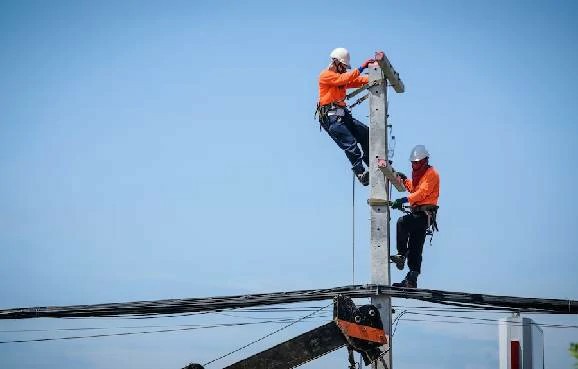Navigating the Elements: Essential Strategies for Working at Heights in Adverse Weather
When it comes to working at heights, safety is paramount. Yet, many overlook that weather conditions can significantly impact safety standards. Whether it’s the fierce winds of Dublin, the persistent rain in Cork, or the icy surfaces in Galway, understanding how these elements affect the workplace is crucial. In this blog, we will delve into the various weather-related challenges faced by those who work at heights and how proper training can equip them to handle these hazards.
The Impact of Weather on Working at Heights Safety
Weather conditions can turn a routine job into a dangerous endeavor. Each element poses unique risks:
- Wind: Strong winds can create instability for scaffolding, ladders, and other equipment. They increase the risk of falls, particularly for workers using harnesses and other fall protection systems.
- Rain: Wet surfaces can become incredibly slippery, raising the risk of slips and falls. Rain can also lead to poor visibility, making it challenging to navigate work sites safely.
- Snow and Ice: Icy surfaces significantly increase the chances of falls, while snow can obscure hazards beneath it, making it difficult to assess the working environment accurately.
- Extreme Temperatures: Both cold and hot temperatures can affect worker performance and judgment. Heat stress can lead to fatigue, while cold can cause hypothermia or frostbite.
How Training Prepares Workers for Weather-Related Challenges
Understanding the risks associated with adverse weather conditions is the first step towards ensuring safety. Certified Working at Heights Training programs are designed to equip workers with the knowledge and skills needed to navigate these challenges effectively. Here’s how:
- Risk Assessment: Training emphasizes the importance of assessing weather conditions before beginning a job. Workers learn how to evaluate wind speed, precipitation, and temperature and make informed decisions about whether to proceed with the work.
- Proper Equipment Use: Participants in a Working at Heights Course learn how to select and use appropriate personal protective equipment (PPE), such as harnesses and helmets, specifically designed to cope with weather-related hazards.
- Emergency Procedures: Training covers emergency response strategies in the event of weather-related incidents, including securing equipment and the proper procedures to follow if a worker falls.
- Situational Awareness: Trained workers develop a keen sense of situational awareness. This skill involves observing changing weather conditions and recognizing their potential impact on safety.
Best Practices for Working Safely in Bad Weather
To mitigate the risks posed by adverse weather while working at heights, consider the following best practices:
- Verify Weather Conditions: Always check the weather forecast before beginning your workday. Postpone tasks if severe weather is expected.
- Utilize Sturdy Equipment: Ensure that your scaffolding and ladders are rated for use in wind and check for any damage that could compromise their integrity.
- Implement Anchor Points: Attach safety harnesses to secure anchor points to mitigate the risks of falls, especially in windy or slippery conditions.
- Wear Appropriate Footwear: Non-slip, insulated footwear can prevent slips on icy surfaces and provide comfort and grip while working.
- Schedule Wisely: Plan high-risk tasks for periods of favorable weather conditions whenever possible.
Conclusion: Prioritize Safety with Comprehensive Training
Regardless of location, weather conditions pose significant threats to workers at heights. Prioritizing safety through ongoing education and appropriate training is crucial to minimizing these risks. By participating in Working at Heights Certification programs, workers can gain essential skills needed to navigate challenging environments safely.
For those in Dublin, Cork, or Galway, investing in a Working at Heights Course Online provides valuable insights tailored to local weather conditions. Always prioritize safety above all – ensuring that your team is prepared for any weather-related challenges is the best approach to maintaining a safe work environment.
If you have any questions or want to enroll in a course, feel free to contact us at [email protected].



 349,500 Offered Certificates
349,500 Offered Certificates
 24/7 Online Training
24/7 Online Training
 Money Back Guarantee
Money Back Guarantee
 Fully Accredited Courses
Fully Accredited Courses
